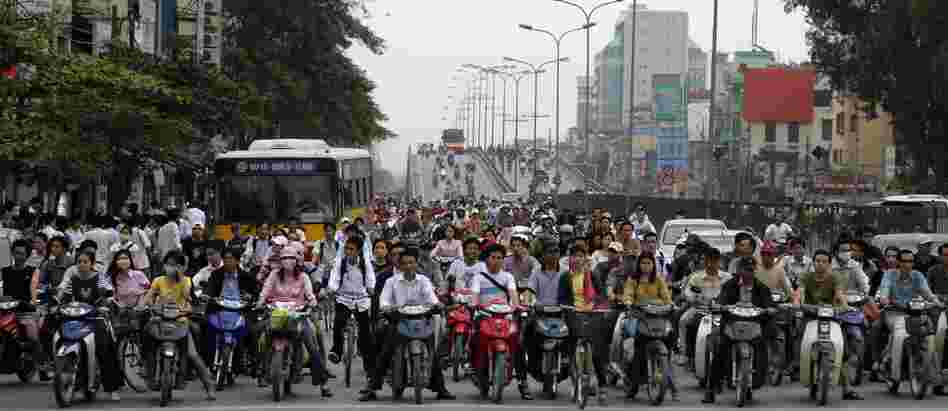This is the second in a series of guest posts by Mike Smitka's students, drawn from the Economics 244 course blog.
... it's to sell a car in my country!! ...
Guest Blogger: Clara Suong Tran
Guest Blogger: Clara Suong Tran
I had an opportunity to work on the Ford Vietnam account when I interned for a U.S. public relations firm based in Hanoi in 2011. Although my focus was the media and branding side, I also learned a lot about Ford Vietnam's business model. What stood out is how hard it was for Ford to sell a car in my country.
During my 3 months in Hanoi, Ford introduced the Fiesta to Vietnam, opened 2 new showrooms, worked on assembly line expansion and was the subject of a tax scandal on imported parts. The new Fiesta was priced at $27,000 - totally unaffordable for 90% of Vietnamese people. The majority of the population farm on small parcels, which limits their incomes. However, even an urban family in Hanoi or Saigon has an annual income of only $6,000-$10,000. As a result we rely on motorbikes for transportation.
Families that can afford to buy a car usually consider Japanese and Korean brands as their top choices — Ford is a high-end brand in Vietnam. Tourism companies favor Ford Escape 7-seaters, which can carry a family on vacation.
In addition to a small market and competition against the Japanese, Ford (and other brands) suffer from complicated regulations. Import the whole car into Vietnam and the government will tax you 200%. Companies that assemble their cars inside Vietnam can import parts (but parts need to qualify under a "small" and "separated" standard - this was the reason got Ford into trouble during my internship). All brands suffer from roads inside metropolitan cities that are not wide enough to accommodate cars.
The agency I interned for decided to brand the Fiesta as a lifestyle, fashionable car, targeting young and affluent working professionals age 25-35, who want to look trendy, modern and are also familiar with the concept of taking out a loan for the car. (We have a saving culture there and we pay for houses and cars upfront, for the whole amount, in cash.) So the agency photoshot the new Fiesta with sexy models in bikinis and placed the pictures in fashion magazines. I don't want to get into too much detail of what we did, but 4 months after the Fiesta was introduced, sales reached 1,000 cars. We believed it was a great success!
It is tough to sell cars in third world countries. Toyota last year announced a plan to roll out a number of new compact cars priced around $12,500 in developing nations. Meanwhile, the U.S. is also trying to dump used cars on poor countries. If you want to know more about how hard it is to get into a developing market, try reading the book American Wheels, Chinese Roads by Michael Dunne. (Prof. Smitka assigned this book about how GM set foot in China to my China's Modern Economy class in 2013.) Though time has changed and China is different from other developing countries, it's a good book to read and see why third world countries are both an attraction and challenge to foreign car makers.
...Clara Suong Tran...
editing by mike smitka
editing by mike smitka

A sensible policy for a developing country is to import used cars. That ends up using less foreign exchange than importing knocked-down (KD) parts kits. However, it doesn't create the highly visible jobs of a car plant. It also is subject to false invoicing, since it's hard to find an objective standard to make sure importers aren't evading taxes or using artificially high prices to surreptitiously transfer funds overseas. (Many developing countries have foreign exchange controls and a black market for foreign currency.)
Japan has long exported used cars, as domestic regulations encouraged owners to scrap vehicles by their 10th year, even if they were low mileage. That's one reason their brands are well-known in Southeast Asia, and why jeepney makers in the Philippines favor Japanese engines – the lack of a good used car market in Japan makes good used engines cheap. Now the "sha-ken" regulations eased circa 1994, but the used car market remains "thin" so plenty still get exported.